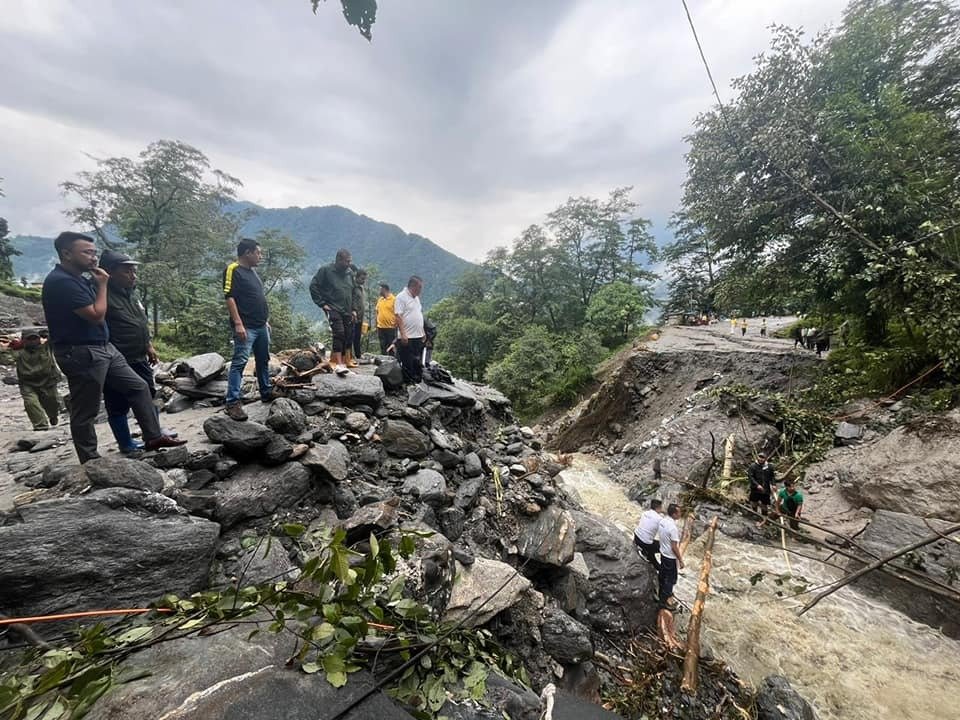GANGTOK: In a significant step toward strengthening disaster preparedness and response mechanisms, the Sikkim State Disaster Management Authority (SSDMA) convened a high-level meeting with nodal officers from various departments across the State, Central departments along with the stakeholders at a local hotel, here today.
Chaired by State Relief Commissioner-cum-secretary, Land Revenue & Disaster Management department Mingma Tempa Sherpa, the session focused on collaborative strategies to tackle recurring challenges faced during disasters and to assess the preparedness of the State departments as well as the Central agencies operating within the State, particularly in light of the upcoming monsoon season.
The meeting commenced with a welcome note from SSDMA additional secretary Parina Gurung. In her remarks, she emphasised that contributions at both the departmental and organisational levels form the foundation of the State’s disaster preparedness and response framework. She underscored the importance of an integrated, coordinated, and timely approach, noting that only through such synergy can the resilience of the State in disaster management be truly strengthened.
This was followed by the session on monsoon preparedness, facilitated by SSDMA additional director Rajiv Roka which involved detailed deliberations from various departments and agencies outlining their specific plans and strategies for the upcoming monsoon season. The departments and agencies that presented included:
Each Central agency and State department detailed its preparedness actions and strategies to mitigate monsoon-related risks.
The chair emphasised the critical importance of inter-departmental coordination and urged all stakeholders to collaborate closely to ensure an effective and timely response during the monsoon season and at the time of disaster if occurs. The deliberations also outlined the roles and responsibilities of various departments and the support mechanisms that can be extended between them.
Addressing the meeting, State Relief Commissioner Mingma Tempa Sherpa, in his keynote remarks said that today’s meeting is not just a routine exercise but is an opportunity to reassess how prepared the stakeholders are for the upcoming monsoon season. He stated that while we may not be able to control nature, what we can control is our level of preparedness by following standard operating procedures, ensuring readiness, and fostering coordination which can significantly mitigate the impact of disasters.
He highlighted the increasing stress on infrastructure and natural systems due to rapid development and tourism, underlining the need to manage carrying capacities and enforce land use planning effectively. Referring to underutilised departmental resources like rainwater harvesting systems, he urged departments to map and optimise their assets for emergency use.
He called on all departments to align their actions, promote resource-sharing, and ensure internal communication across all levels. Special mention was made to civil society organizations for their role in community mobilisation and last-mile delivery during emergencies. He further urged greater engagement with religious and grassroots organisations to build community resilience. He also emphasised the importance of adhering to SOPs, ensuring the availability of disaster medicines and clean water, and widely propagating the emergency helpline 112 for rapid response. Public vigilance and participation are critical components of effective disaster management, he added.
Furthermore, he stressed the need to strictly enforce land-use planning regulations and construction norms to minimize risks and ensure long-term resilience.
Citing personal examples of reporting civic issues through citizen platforms, the State Relief Commissioner encouraged officials to remain receptive to feedback and uphold public accountability. He reiterated constructive criticism should be seen as a means to improve, not as an affront as we are all duty-bound to serve and protect.

Leave a comment




